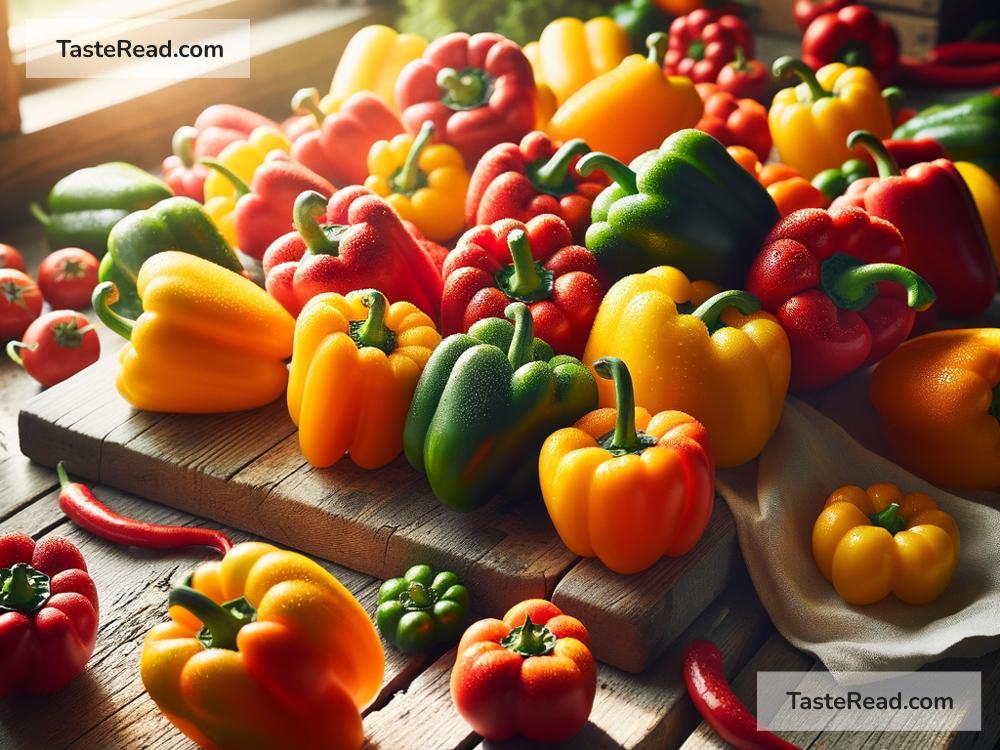Why Bell Peppers Come in Different Colors
Bell peppers are loved around the world for their vibrant colors, crispy texture, and versatility in cooking. Whether you’re making salads, stir-fries, or fajitas, bell peppers add a burst of color and flavor to any dish. But have you ever wondered why bell peppers come in different colors? Let’s explore the fascinating answer behind their colorful appearances and how their colors relate to ripeness, flavor, and nutrition.
Bell Pepper Basics
Bell peppers are fruits that belong to the Capsicum annuum species. They are unique because they are sweet rather than spicy, unlike chili peppers which belong to the same family. Bell peppers come in different colors—green, red, yellow, orange, and sometimes even purple, brown, or white. These colors are more than just pretty—they tell the story of the pepper’s life and ripeness.
The Role of Ripeness
The main reason bell peppers come in different colors is because of their stage of ripeness. All bell peppers start out green. As they mature, they change color, moving to yellow, orange, or red depending on the type of pepper.
-
Green Bell Peppers: Green bell peppers are the least mature. They are harvested early before they fully ripen. Because they are not ripe, they taste less sweet and slightly bitter, and their texture is firmer. Green peppers are usually the cheapest because they take less time to grow and are easier to produce.
-
Yellow and Orange Bell Peppers: As a bell pepper ripens, it can transition to yellow or orange depending on its variety. These peppers are sweeter and milder than green ones. They contain more natural sugars and have a softer texture.
-
Red Bell Peppers: Red bell peppers are fully mature and ripe. They are the sweetest and richest in flavor out of all the colors. They also have the softest texture and are usually more expensive than green ones due to their longer growth time and the additional care needed to let them ripen fully.
Not all peppers go through every color stage. Some types of peppers may only ripen from green to yellow, while others change directly from green to red. The variety of the pepper plant determines the colors it will produce.
Why Do Different Colors Taste Different?
The taste of a bell pepper comes from the natural sugars in the fruit. As a pepper ripens, it develops more sugars, which make it sweeter. Green peppers are less sweet because they are unripe, whereas red peppers are the sweetest because they are fully ripe.
The bitterness in green bell peppers is due to lower sugar levels and the presence of certain compounds. As the pepper matures and changes color, these compounds break down, and sugars accumulate, giving the pepper a sweeter taste.
Nutrition Differences
The color of a bell pepper isn’t just a sign of ripeness—it also tells us about the nutrients inside. While all bell peppers are healthy, their nutritional content can vary slightly based on their color.
-
Green Bell Peppers: Green peppers contain fewer calories and less vitamin C compared to their colorful counterparts. However, they still provide a good amount of fiber and antioxidants.
-
Yellow and Orange Bell Peppers: These peppers contain more vitamin C than green ones. They also have higher levels of carotenoids, which are antioxidants that benefit your skin and eyes.
-
Red Bell Peppers: Red peppers are the nutrient powerhouses of the group. They have the most vitamin C—nearly three times more than green peppers! They also contain beta-carotene, which your body converts into vitamin A. Vitamin A helps with vision, immune health, and skin.
If you’re looking to maximize the health benefits of bell peppers, choosing red ones might be your best option.
Why Are Bell Peppers Different Colors?
If all bell peppers start out green, how do they turn other colors? The answer lies in their genetics. Different varieties of bell peppers are bred to ripen into specific colors. For example, one type of bell pepper plant may change from green to yellow, while another changes from green to red. The seeds of each variety determine what colors the peppers will be as they mature.
Additionally, environmental factors, such as temperature, sunlight, and soil quality, can impact how brightly colored the peppers become. Farmers take great care to ensure their peppers grow in the best conditions to produce vibrant, flavorful fruits.
Conclusion
Bell peppers are a wonderful example of nature’s diversity. Their different colors are a reflection of their ripeness, variety, and nutritional content. Green peppers are crunchy and slightly bitter, while red peppers are sweet and packed with vitamins. As they ripen, their flavor changes and their health benefits increase, making them a great addition to any meal.
Next time you’re grocery shopping, take a moment to appreciate the colorful array of bell peppers. Whether you choose green, yellow, orange, or red, you’ll be getting a delicious and nutritious ingredient to brighten up your plate.


